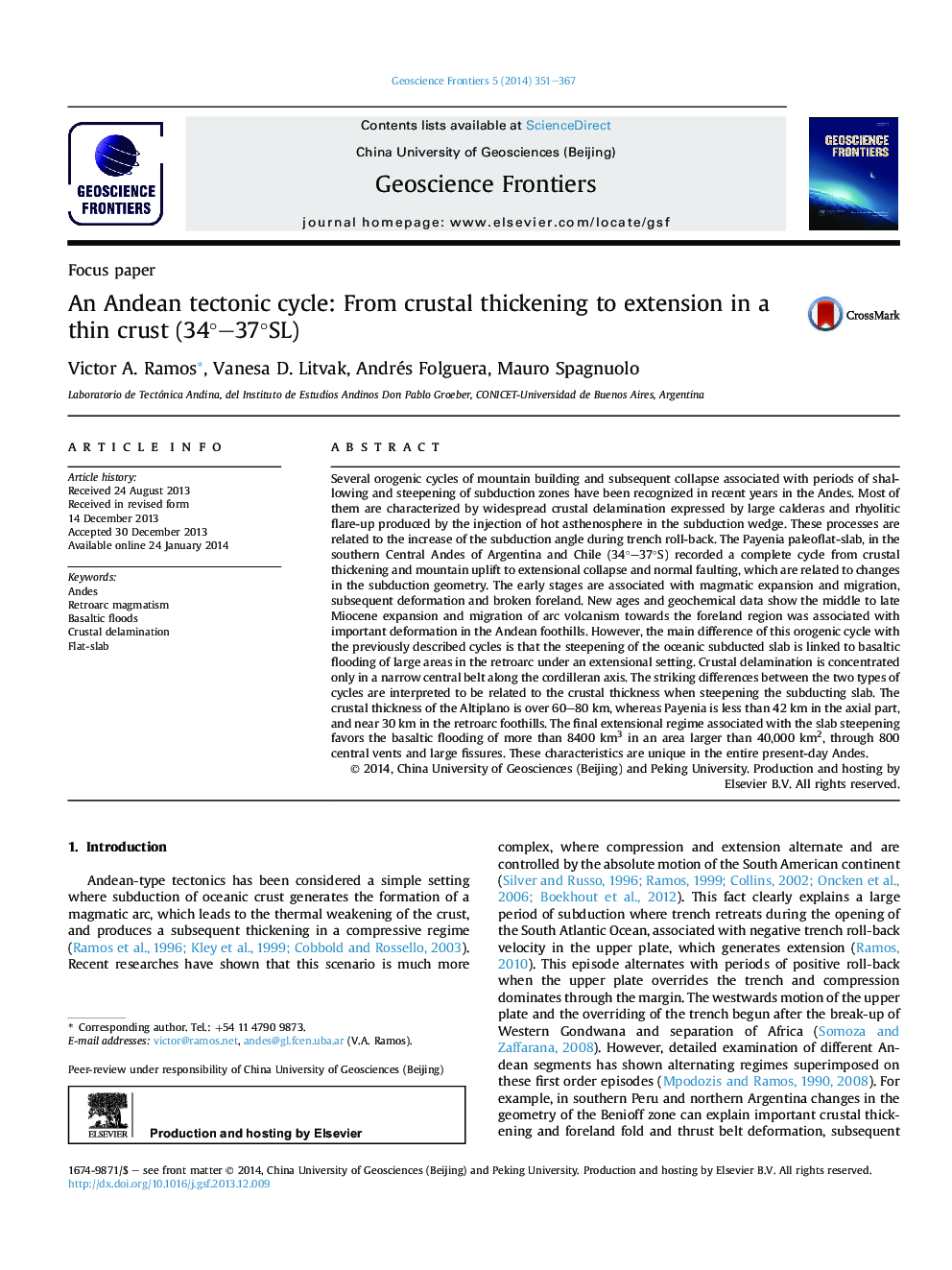| Article ID | Journal | Published Year | Pages | File Type |
|---|---|---|---|---|
| 4681580 | Geoscience Frontiers | 2014 | 17 Pages |
•Orogenic cycles in the Andes are controlled by changes in the subduction angle.•Steepening of the subduction produces delamination and large rhyolitic calderas.•Poorly evolved large basalt floods are exceptionally linked to a steepening.•We review the magmatism and deformation to understand this exceptional case.
Several orogenic cycles of mountain building and subsequent collapse associated with periods of shallowing and steepening of subduction zones have been recognized in recent years in the Andes. Most of them are characterized by widespread crustal delamination expressed by large calderas and rhyolitic flare-up produced by the injection of hot asthenosphere in the subduction wedge. These processes are related to the increase of the subduction angle during trench roll-back. The Payenia paleoflat-slab, in the southern Central Andes of Argentina and Chile (34°–37°S) recorded a complete cycle from crustal thickening and mountain uplift to extensional collapse and normal faulting, which are related to changes in the subduction geometry. The early stages are associated with magmatic expansion and migration, subsequent deformation and broken foreland. New ages and geochemical data show the middle to late Miocene expansion and migration of arc volcanism towards the foreland region was associated with important deformation in the Andean foothills. However, the main difference of this orogenic cycle with the previously described cycles is that the steepening of the oceanic subducted slab is linked to basaltic flooding of large areas in the retroarc under an extensional setting. Crustal delamination is concentrated only in a narrow central belt along the cordilleran axis. The striking differences between the two types of cycles are interpreted to be related to the crustal thickness when steepening the subducting slab. The crustal thickness of the Altiplano is over 60–80 km, whereas Payenia is less than 42 km in the axial part, and near 30 km in the retroarc foothills. The final extensional regime associated with the slab steepening favors the basaltic flooding of more than 8400 km3 in an area larger than 40,000 km2, through 800 central vents and large fissures. These characteristics are unique in the entire present-day Andes.
Graphical AbstractFigure optionsDownload full-size imageDownload as PowerPoint slide
